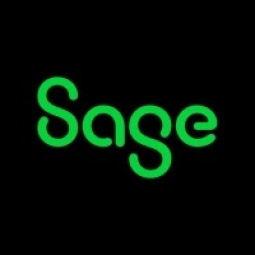公司规模
Mid-size Company
地区
- America
国家
- United States
产品
- Sage 500 ERP
- Fusion 2000
- Raiser’s Edge
- DataPorter module
技术栈
- ERP Systems
- Point-of-Sale Systems
- Fundraising Module
- Data Integration Module
实施规模
- Enterprise-wide Deployment
影响指标
- Productivity Improvements
- Cost Savings
技术
- 功能应用 - 企业资源规划系统 (ERP)
适用行业
- 教育
- 零售
用例
- 库存管理
服务
- 系统集成
- 软件设计与工程服务
关于客户
旧金山现代艺术博物馆 (SFMOMA) 是一家私人艺术博物馆和非营利组织。它于 1935 年开业,是西海岸第一家专门收藏 20 世纪艺术的博物馆。SFMOMA 的藏品以克莱福德·斯蒂尔、罗伯特·劳森伯格、马塞尔·杜尚、菲利普·加斯顿、阿尔弗雷德·斯蒂格里茨、安塞尔·亚当斯、爱德华·韦斯顿、亨利·马蒂斯、保罗·克利以及来自墨西哥、南加州和旧金山湾区的艺术家的主要作品而闻名。除了博物馆展览外,SFMOMA 还提供许多教育活动、公共项目,并经营着一个拥有超过 40,000 件编目物品的研究图书馆。SFMOMA 在博物馆、旧金山国际机场和 Embarcadero 购物中心经营博物馆商店。其位于旧金山海滨的艺术家画廊以佣金形式出租和出售当地艺术家的作品。
挑战
旧金山现代艺术博物馆 (SFMOMA) 一直苦苦挣扎于其业务各个部分使用独立的非集成系统。很难从这些系统中提取信息,也不可能整合博物馆各种运营的数据。由于预算高达 3000 万美元,每一分钱都必须记账。博物馆需要一个先进的财务解决方案,可以管理 3000 万美元运营的各种信息集成需求、报告和分发要求。
解决方案
SFMOMA 选择 Sage 500 ERP 是因为其出色的报告和深入分析功能、灵活的会计科目表和高级分销功能。Sage 500 ERP 为 SFMOMA 提供了端到端业务系统,以实现终极财务控制。博物馆门票押金每天输入 Sage 500 ERP,月底门票数据通过现金管理模块进行核对并记录为收入。博物馆商店销售的收银机收据在 Fusion 2000(Mik and Associates 的集成销售点系统)中记录,并每天分批过账到库存、应收账款和现金管理模块。捐款通过 Raiser's Edge(筹款人的第三方模块)作为押金输入,然后使用 DataPorter 模块以电子方式转入会计系统。
运营影响
数量效益

Case Study missing?
Start adding your own!
Register with your work email and create a new case study profile for your business.
相关案例.

Case Study
Improving Production Line Efficiency with Ethernet Micro RTU Controller
Moxa was asked to provide a connectivity solution for one of the world's leading cosmetics companies. This multinational corporation, with retail presence in 130 countries, 23 global braches, and over 66,000 employees, sought to improve the efficiency of their production process by migrating from manual monitoring to an automatic productivity monitoring system. The production line was being monitored by ABB Real-TPI, a factory information system that offers data collection and analysis to improve plant efficiency. Due to software limitations, the customer needed an OPC server and a corresponding I/O solution to collect data from additional sensor devices for the Real-TPI system. The goal is to enable the factory information system to more thoroughly collect data from every corner of the production line. This will improve its ability to measure Overall Equipment Effectiveness (OEE) and translate into increased production efficiencies. System Requirements • Instant status updates while still consuming minimal bandwidth to relieve strain on limited factory networks • Interoperable with ABB Real-TPI • Small form factor appropriate for deployment where space is scarce • Remote software management and configuration to simplify operations

Case Study
Digital Retail Security Solutions
Sennco wanted to help its retail customers increase sales and profits by developing an innovative alarm system as opposed to conventional connected alarms that are permanently tethered to display products. These traditional security systems were cumbersome and intrusive to the customer shopping experience. Additionally, they provided no useful data or analytics.

Case Study
How Sirqul’s IoT Platform is Crafting Carrefour’s New In-Store Experiences
Carrefour Taiwan’s goal is to be completely digital by end of 2018. Out-dated manual methods for analysis and assumptions limited Carrefour’s ability to change the customer experience and were void of real-time decision-making capabilities. Rather than relying solely on sales data, assumptions, and disparate systems, Carrefour Taiwan’s CEO led an initiative to find a connected IoT solution that could give the team the ability to make real-time changes and more informed decisions. Prior to implementing, Carrefour struggled to address their conversion rates and did not have the proper insights into the customer decision-making process nor how to make an immediate impact without losing customer confidence.

Case Study
Ensures Cold Milk in Your Supermarket
As of 2014, AK-Centralen has over 1,500 Danish supermarkets equipped, and utilizes 16 operators, and is open 24 hours a day, 365 days a year. AK-Centralen needed the ability to monitor the cooling alarms from around the country, 24 hours a day, 365 days a year. Each and every time the door to a milk cooler or a freezer does not close properly, an alarm goes off on a computer screen in a control building in southwestern Odense. This type of alarm will go off approximately 140,000 times per year, equating to roughly 400 alarms in a 24-hour period. Should an alarm go off, then there is only a limited amount of time to act before dairy products or frozen pizza must be disposed of, and this type of waste can quickly start to cost a supermarket a great deal of money.

Case Study
Supermarket Energy Savings
The client had previously deployed a one-meter-per-store monitoring program. Given the manner in which energy consumption changes with external temperature, hour of the day, day of week and month of year, a single meter solution lacked the ability to detect the difference between a true problem and a changing store environment. Most importantly, a single meter solution could never identify root cause of energy consumption changes. This approach never reduced the number of truck-rolls or man-hours required to find and resolve issues.








